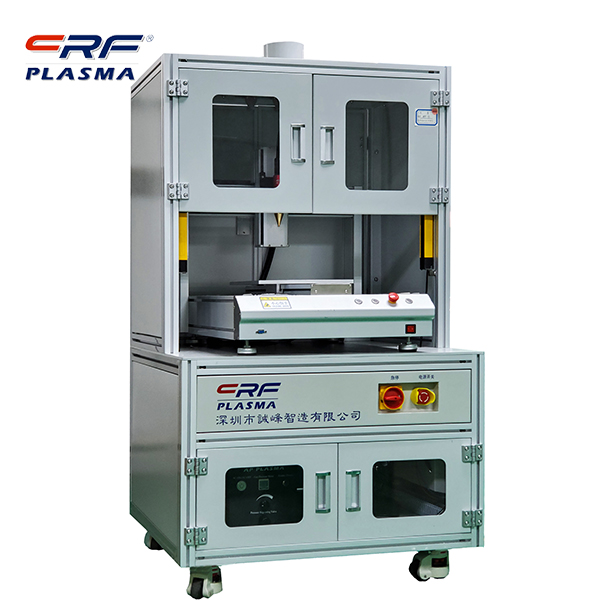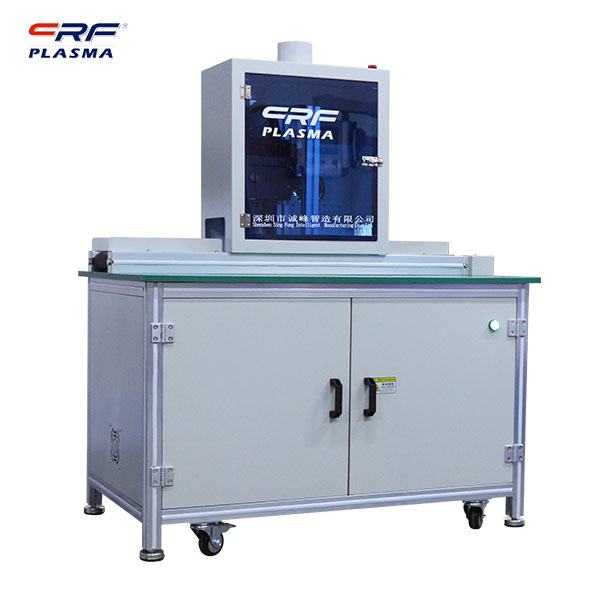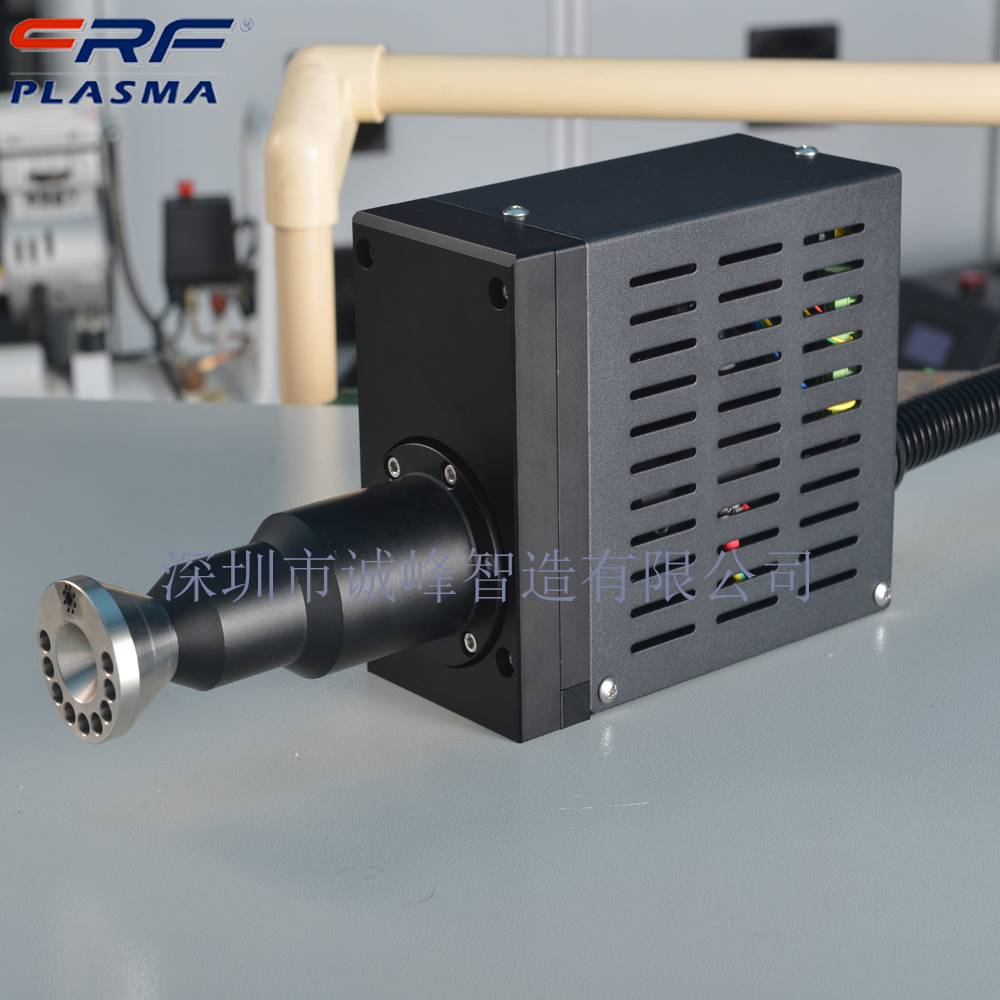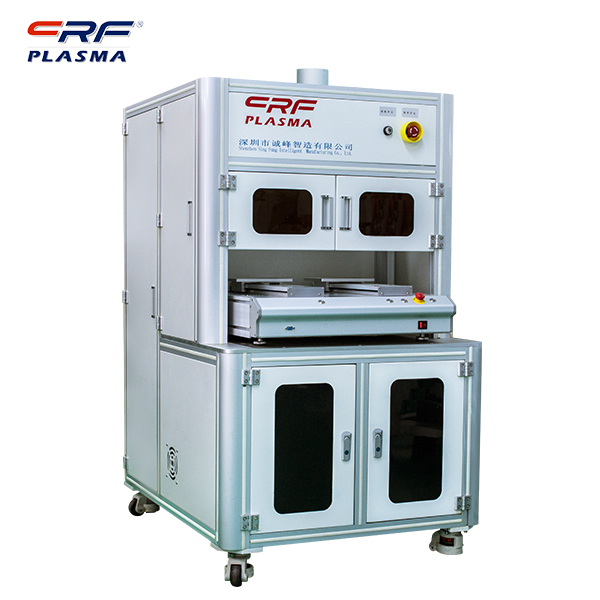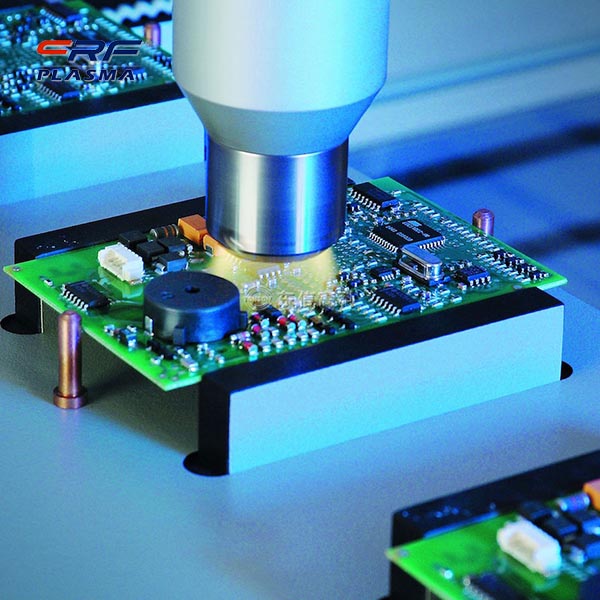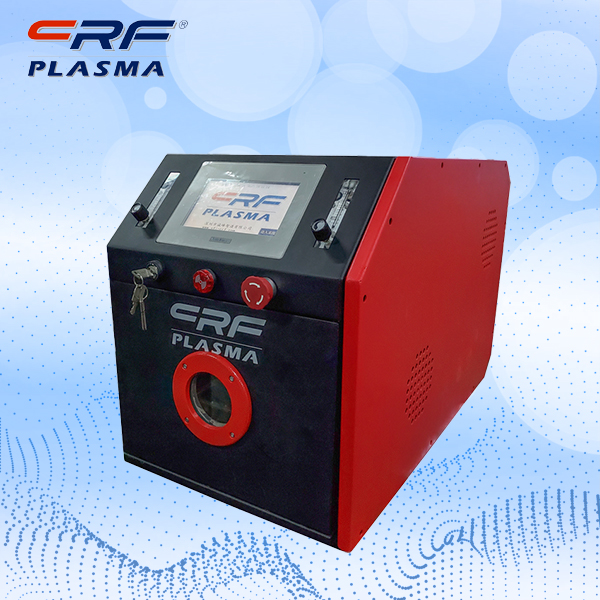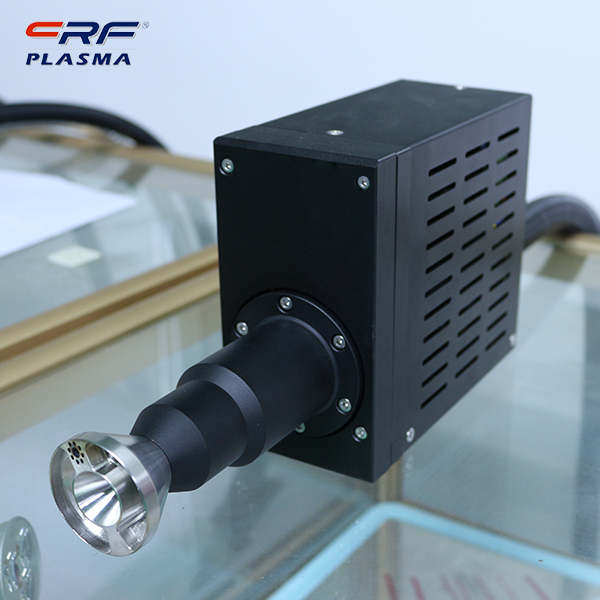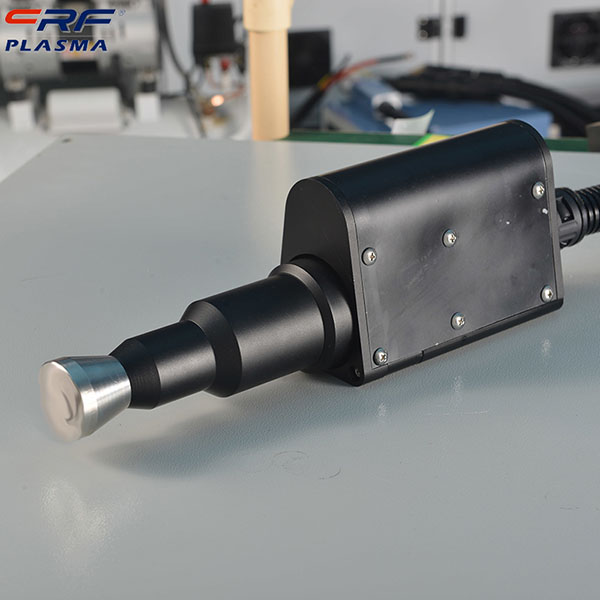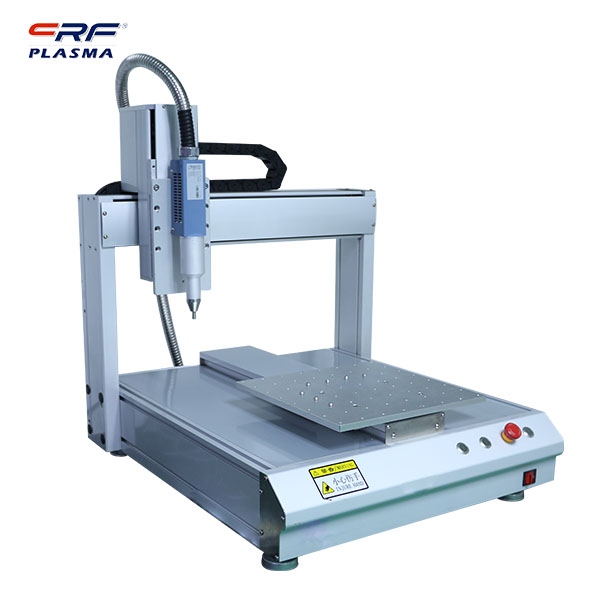
Welcome to Shenzhen Sing Fung Intelligent Manufacturing Co., Ltd.
E-mail:shaobo@sfi-crf.com
Hydrophobic reaction between TMCS and Southwest birch wood surface in plasma environment
- Categories:Industry News
- Author:Plasma cleaning machine-CRF plasma plasma equipment-plasma surface treatment machine manufacturer-chengfeng intelligent manufacturing
- Origin:
- Time of issue:2022-03-01
- Views:
(Summary description)Hydrophobic reaction between TMCS and Southwest birch wood surface in plasma environment: Wood is a renewable green material and biological resource among the four major materials (steel, cement, wood and plastic). Decoration, paper, furniture, packaging and agriculture. However, due to the presence of many free hydroxyl groups in chemical components such as cellulose and hemicellulose in wood components, they have strong hygroscopic ability under certain temperature and humidity conditions, and moisture absorption will lead to shrinkage and swelling of wood and poor dimensional stability. , discoloration and susceptibility to fungi and insects. Wood is deteriorated due to the influence of light, heat, water and other external environments. The deterioration generally starts from the surface and then gradually develops to the interior. Therefore, appropriate physical or chemical methods are used to treat the surface of the wood to avoid the occurrence of these inherent defects. Particularly important. Southwest birch is a fast-growing wood species with high economic value in southwest China. It has fine structure, beautiful patterns and good processing performance. It is an excellent wood for flooring and furniture. Using volatile trimethylchlorosilane (TMCS) as the monomer, the silyl group is introduced into the surface of the wood in a plasma environment to silanize the wood surface, endow the wood surface with hydrophobic properties, and expand the use range of wood and improve its durability. Plasma treatment is a dry process that requires less chemicals and the reaction is carried out at a lower temperature, so plasma surface treatment is considered to be an economical and environmentally friendly treatment method. The cell wall surface of untreated wood left traces of torn wood fibers during the slicing process, and the rest of the area was smooth. However, granular structures appeared on the surface of the wood cell wall treated with TMCS plasma, and these granular structures evenly covered the surface of the cell wall, which fully indicated that TMCS was successfully polymerized and deposited on the surface of the wood under the plasma environment. There are two ways to improve and change the hydrophobicity of the material surface, one is to increase the roughness of the surface of the hydrophobic material; the other is to modify the low surface energy material on the rough surface, and the latter gradually becomes the mainstream. The static contact angle test on the untreated Southwest birch wood surface showed "zero", that is, the water droplets wet the wood surface immediately after contacting the wood surface, but the wood surface modified by TMCS plasma had better hydrophobicity and hydrophobic stability sex. With the increase of the treatment power, the contact angle showed a decreasing trend, and the same results were obtained when the surface of southern ponderosa pine wood was treated with hexamethyldisiloxane plasma, indicating that low power is beneficial to the formation of the surface of the wood. Hydrophobic films, and the increase in power will aggravate the oxidation resulting in an increase in the concentration of oxygen-containing functional groups on the surface. The surface of Southwest birch wood was modified with TMCS in a plasma environment. After 28 days of continuous aging under different temperature and humidity conditions, the wood surface still showed stable hydrophobic properties, and the decrease in contact angle after aging was only 1.9°~3.7°. ° between. In the plasma environment, TMCS reacted with the surface of Southwest birch wood, and silyl groups were introduced into the surface of the wood, and the content of silicon reached 22.82%. The treated wood surface formed a uniform granular structure, which significantly improved the hydrophobicity and hydrophobic stability of the wood surface.
Hydrophobic reaction between TMCS and Southwest birch wood surface in plasma environment
(Summary description)Hydrophobic reaction between TMCS and Southwest birch wood surface in plasma environment:
Wood is a renewable green material and biological resource among the four major materials (steel, cement, wood and plastic). Decoration, paper, furniture, packaging and agriculture. However, due to the presence of many free hydroxyl groups in chemical components such as cellulose and hemicellulose in wood components, they have strong hygroscopic ability under certain temperature and humidity conditions, and moisture absorption will lead to shrinkage and swelling of wood and poor dimensional stability. , discoloration and susceptibility to fungi and insects.
Wood is deteriorated due to the influence of light, heat, water and other external environments. The deterioration generally starts from the surface and then gradually develops to the interior. Therefore, appropriate physical or chemical methods are used to treat the surface of the wood to avoid the occurrence of these inherent defects. Particularly important.
Southwest birch is a fast-growing wood species with high economic value in southwest China. It has fine structure, beautiful patterns and good processing performance. It is an excellent wood for flooring and furniture. Using volatile trimethylchlorosilane (TMCS) as the monomer, the silyl group is introduced into the surface of the wood in a plasma environment to silanize the wood surface, endow the wood surface with hydrophobic properties, and expand the use range of wood and improve its durability.
Plasma treatment is a dry process that requires less chemicals and the reaction is carried out at a lower temperature, so plasma surface treatment is considered to be an economical and environmentally friendly treatment method. The cell wall surface of untreated wood left traces of torn wood fibers during the slicing process, and the rest of the area was smooth. However, granular structures appeared on the surface of the wood cell wall treated with TMCS plasma, and these granular structures evenly covered the surface of the cell wall, which fully indicated that TMCS was successfully polymerized and deposited on the surface of the wood under the plasma environment.
There are two ways to improve and change the hydrophobicity of the material surface, one is to increase the roughness of the surface of the hydrophobic material; the other is to modify the low surface energy material on the rough surface, and the latter gradually becomes the mainstream. The static contact angle test on the untreated Southwest birch wood surface showed "zero", that is, the water droplets wet the wood surface immediately after contacting the wood surface, but the wood surface modified by TMCS plasma had better hydrophobicity and hydrophobic stability sex.
With the increase of the treatment power, the contact angle showed a decreasing trend, and the same results were obtained when the surface of southern ponderosa pine wood was treated with hexamethyldisiloxane plasma, indicating that low power is beneficial to the formation of the surface of the wood. Hydrophobic films, and the increase in power will aggravate the oxidation resulting in an increase in the concentration of oxygen-containing functional groups on the surface.
The surface of Southwest birch wood was modified with TMCS in a plasma environment. After 28 days of continuous aging under different temperature and humidity conditions, the wood surface still showed stable hydrophobic properties, and the decrease in contact angle after aging was only 1.9°~3.7°. ° between.
In the plasma environment, TMCS reacted with the surface of Southwest birch wood, and silyl groups were introduced into the surface of the wood, and the content of silicon reached 22.82%. The treated wood surface formed a uniform granular structure, which significantly improved the hydrophobicity and hydrophobic stability of the wood surface.
- Categories:Industry News
- Author:Plasma cleaning machine-CRF plasma plasma equipment-plasma surface treatment machine manufacturer-chengfeng intelligent manufacturing
- Origin:
- Time of issue:2022-03-01 16:38
- Views:
Hydrophobic reaction between TMCS and Southwest birch wood surface in plasma environment:
Wood is a renewable green material and biological resource among the four major materials (steel, cement, wood and plastic). Decoration, paper, furniture, packaging and agriculture. However, due to the presence of many free hydroxyl groups in chemical components such as cellulose and hemicellulose in wood components, they have strong hygroscopic ability under certain temperature and humidity conditions, and moisture absorption will lead to shrinkage and swelling of wood and poor dimensional stability. , discoloration and susceptibility to fungi and insects.
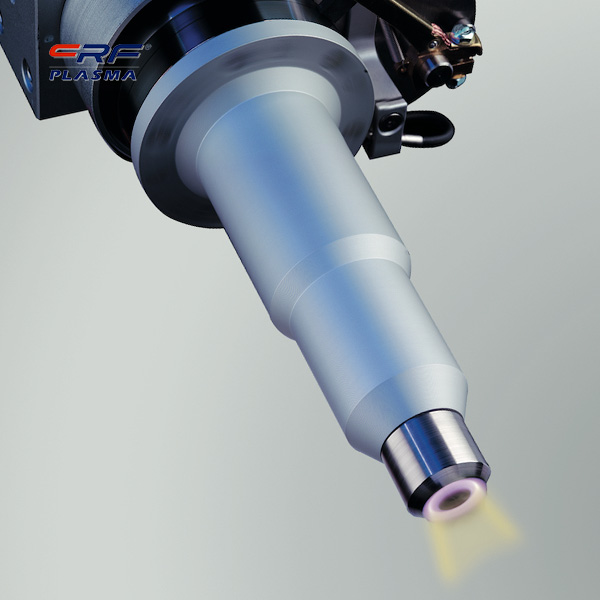 Wood is deteriorated due to the influence of light, heat, water and other external environments. The deterioration generally starts from the surface and then gradually develops to the interior. Therefore, appropriate physical or chemical methods are used to treat the surface of the wood to avoid the occurrence of these inherent defects. Particularly important.
Wood is deteriorated due to the influence of light, heat, water and other external environments. The deterioration generally starts from the surface and then gradually develops to the interior. Therefore, appropriate physical or chemical methods are used to treat the surface of the wood to avoid the occurrence of these inherent defects. Particularly important.
Southwest birch is a fast-growing wood species with high economic value in southwest China. It has fine structure, beautiful patterns and good processing performance. It is an excellent wood for flooring and furniture. Using volatile trimethylchlorosilane (TMCS) as the monomer, the silyl group is introduced into the surface of the wood in a plasma environment to silanize the wood surface, endow the wood surface with hydrophobic properties, and expand the use range of wood and improve its durability.
Plasma treatment is a dry process that requires less chemicals and the reaction is carried out at a lower temperature, so plasma surface treatment is considered to be an economical and environmentally friendly treatment method. The cell wall surface of untreated wood left traces of torn wood fibers during the slicing process, and the rest of the area was smooth. However, granular structures appeared on the surface of the wood cell wall treated with TMCS plasma, and these granular structures evenly covered the surface of the cell wall, which fully indicated that TMCS was successfully polymerized and deposited on the surface of the wood under the plasma environment.
There are two ways to improve and change the hydrophobicity of the material surface, one is to increase the roughness of the surface of the hydrophobic material; the other is to modify the low surface energy material on the rough surface, and the latter gradually becomes the mainstream. The static contact angle test on the untreated Southwest birch wood surface showed "zero", that is, the water droplets wet the wood surface immediately after contacting the wood surface, but the wood surface modified by TMCS plasma had better hydrophobicity and hydrophobic stability sex.
With the increase of the treatment power, the contact angle showed a decreasing trend, and the same results were obtained when the surface of southern ponderosa pine wood was treated with hexamethyldisiloxane plasma, indicating that low power is beneficial to the formation of the surface of the wood. Hydrophobic films, and the increase in power will aggravate the oxidation resulting in an increase in the concentration of oxygen-containing functional groups on the surface.
The surface of Southwest birch wood was modified with TMCS in a plasma environment. After 28 days of continuous aging under different temperature and humidity conditions, the wood surface still showed stable hydrophobic properties, and the decrease in contact angle after aging was only 1.9°~3.7°. ° between.
In the plasma environment, TMCS reacted with the surface of Southwest birch wood, and silyl groups were introduced into the surface of the wood, and the content of silicon reached 22.82%. The treated wood surface formed a uniform granular structure, which significantly improved the hydrophobicity and hydrophobic stability of the wood surface.
Scan the QR code to read on your phone

TEL:0755-3367 3020 / 0755-3367 3019

E-mail:sales-sfi@sfi-crf.com

ADD:Mabao Industrial Zone, Huangpu, Baoan District, Shenzhen




